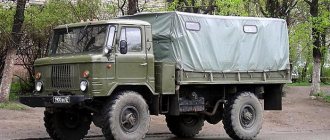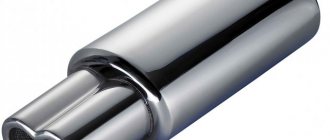- Wild animals
- >>
- Mammals
The bargusin is a graceful carnivore of the mustelid family found in the forests of northern Asia, highly prized for its fine, delicate fur. Fur color ranges from extremely dark to light brown. The darker the color of the skin, the higher its price at fur auctions. The name Barguzin sable has Slavic roots and took root in many Western European languages, probably as a result of the fur trade in the early Middle Ages. Therefore, the Russian sable (sobol) turned out to be the German Zobel, the Portuguese zibelina, the French zibeline, the Finnish soopeli, the Dutch Sabel, etc.
Appearance of the beast
What does Barguzin sable look like? The color of the animal is uneven and depends on the part of the body. For example, on the head there is the darkest shade, almost black, the body can be light, from sandy yellow to calm fawn, or brown with darkening along the back and a rich spot on the throat. The first option is called fur and is used as the main raw material for all kinds of products. The second - collar is used for making shawls, hats and other items of clothing. Collars for the main product are often sewn from it.
Peculiarities
This furry animal is actually a very dexterous and merciless predator that loves to settle in cedar trees, thickets, stone deposits, upper rivers and rocky areas. Sometimes he climbs the treetops. The Barguzin sable moves by jumping, which ranges from 30 to 70 cm in length. Thanks to the structure of its paws, it does not fall into the snow and deftly climbs tree branches. The animal has an excellently developed sense of smell and hearing, but its vision is weaker. The sound that this furry predator makes can be called a rumbling, vaguely reminiscent of a cat's purring.
Features of character and lifestyle
Photo: Barguzin in winter
Sables primarily move on the ground, but can climb well. They create several nests in their territory near river banks and in the densest parts of the forest, mainly in hollow tree trunks, in crevices or under tree roots, which they line with dry plants or hair. These holes are made as safe as possible.
The territory of Barguzin ranges from 4 to 30 km². Size depends on the habitat and therefore potential food, as well as the age of the animal. Every day the sable travels 6.5-12 km within its space. In exceptional cases the distance can be 30 km, but migrations of 300 km have been detected.
The sable is mainly active at dusk, but can move at night, but rarely during the day. In very cold weather they often spend several days in their nest. Movement forward occurs due to small jumps with a width of 40 to 70 cm. Theoretically, the sable can make jumps up to 4 m wide. Their lair is well camouflaged, covered with grass and fur, but can be temporary, especially in winter, when the animal travels over large distances in search of prey. distances.
Interesting fact: The age structure of the species, determined by the aging method, is as follows: juveniles 62.7%; yearlings 12.5%; 2–4 years – 2.7–5.5%; 5–7 years — 1.5–3.7%, animals 8 years and older — 0.4–1.7% in the Urals and 75.6%, 5.7%, 2.7–4.9%, 0.8–2.5% and 0.2–1.4%, respectively, in Western Sayan. Annual survival rate of sables: 19.9% for juveniles, 44.0% for annuals and 75.9–79.4% for animals at 2–9 years in the Urals and 33.0%, 59.6% and 49.3–75 .8% respectively in Western Sayan.
On farms, barguzins live up to 18 years, while in the wild, sable individuals have a maximum lifespan of 9-10 years; older barguzins are very rare. Approximately two-thirds of the wild sable population are individuals under two years of age.
Nutrition
The Barguzin sable, a photo of which can be seen in our article, feeds mainly on various rodents. Among them are red-backed voles, pikas, as well as squirrels and hares. In addition, the animal loves to feast on birds, for example, hazel grouse or wood grouse. The sable's hunting mode directly depends on the feeling of hunger. Despite the fact that the main activity occurs at night and at dusk, the predator also often goes fishing in broad daylight. In addition to food of animal origin, the sable loves to eat nuts and berries, such as lingonberries, blueberries, rowan, currants, blueberries, rose hips and bird cherry. Thanks to a varied diet, the Barguzin sable, the photo of which shows the animal in all its splendor, boasts silky and shiny fur.
Natural enemies of barguzins
Photo: Barguzin
In addition to natural deaths, barguzins can be attacked by eight species of mammals and eight species of birds. The sable's competitors in its habitat are omnivorous and carnivorous predators. The animal can suffer from the presence of 34 species of helminths, 19 species of fleas and three species of gamasid mites, described as parasites of the sable.
The barguzin's main predators include a number of larger animals, namely:
- wolves;
- wolverines;
- lynx;
- eagles;
- eagle owls;
- foxes;
- other birds of prey (falcons);
- tigers;
- large owls.
Barguzins are equipped with sharp claws and sharp teeth, allowing them to effectively defend themselves against many predators. However, the most dangerous predator is man, because for centuries it was believed that the sable has one of the most valuable skins. Animals were widely known already in the 3rd century BC. Out of respect, the Scythian peoples sent valuable furs across the Black Sea to the Greek world.
Later, sable skins became a status symbol, especially in Russia. The crown of Russian tsars was decorated with precious sable fur until the 17th century. The conquered peoples of Siberia paid tribute in sable skins. Therefore, due to overhunting, sable became rare in the early 20th century. The price of sable in 2010 was $167 for sable fur and $138 for wild game. Most of the skins on the market now come from farmed animals.
Puberty and pregnancy
In the wild, the predator makes nests in tree hollows, scattered stones, and also in burrows among rhizomes. Reaching sexual maturity at two to three years, these representatives of mustelids reproduce for 10-11 years. The cycle of reproductive activity ends at a maximum of the 15th year of life. Predators mate in the summer, the main months being June and July. Pregnancy lasts approximately 8 months, more precisely 250-290 days, as a result of which from one to seven cubs are born. On average, this number is 3-4 puppies. The female produces offspring in northern latitudes, starting in May, in the southern regions - one month earlier (from April).
Social structure and reproduction
Photo: Little Barguzin
It is observed that males, marking their territory, form ruts or small grooves in the snow about a meter long, accompanied by frequent urination. Mating occurs between June 15 and August 15, with the date varying depending on geographic location. In areas where individuals are scarce, courtship rituals include running, jumping, and "cat calls" between males and females. However, in areas where male distribution ranges overlap, competition for females can lead to fierce battles.
After insemination, the fertilized cell does not implant into the wall of the female's uterus. Implantation occurs after eight months, and embryonic development takes only 25-30 days. However, the total gestation time is between 250 and 300 days. A female's litter ranges from 1 to 7 young, but smaller litters of 2-3 are more common. Paternal care is observed in some barguzins, as males defend the territory of females and even provide food to nursing mothers and their offspring.
Newborn barguzins are born helpless, with their eyes closed and a very thin layer of hair. The babies weigh from 25 to 35 grams and are on average 10 cm long. The young bargus open their eyes between 30 and 36 days of their life and leave the nest soon after. Seven weeks after birth, they are weaned and receive chewed food from their mother. Barguzins reach sexual maturity in the second year of life.
Where are they found in nature?
The Barguzin sable lives in the Siberian taiga, in the Urals, in the northern reaches of the forest vegetation of the Pacific coast, on the island of Hokkaido in Japan. Every year the number of this predator decreases due to the great value of its fur. High population density has been recorded in the mountainous regions of the Sayan taiga and Kuznetsk Alatau. Sable is often found in the central part of the region, for example, in highway and forest-steppe strips, also in Chulym.
The number of these animals is scattered unevenly across these territories. Southern latitudes, including the Angara region and most of the Yenisei region, can also be called densely populated areas. Indeed, many sables are observed in dark coniferous areas. For example, in the Baykitsky and Turukhansky regions, as well as in the Yenisei taiga. In lighter coniferous thickets, the number is considered average. In the northern part of the taiga expanses, the Barguzin sable is a rare “guest”. In the forest-tundra strip up to Nikolskoye and Potapov, as well as in the eastern region up to the Kotui and Fomich rivers, settlements of mustelid representatives are observed sporadically.
The smallest numbers, if not the complete absence of these predators, were recorded in the southern zone. The reason for this, of course, is thriving poaching. Depending on the region of habitat, there are Tobolsk, Kuznetsk, Altai, Yenisei, Sayan, Angarsk, Tunguska, Ilimpiysk, Vitim, Chikoi, Yakut, Far Eastern, and Kamchatka sable.
Origin of the species and description
Photo: Barguzin
Karl von Linne described the barguzin in 1758 in the book “Nature” under the name Mustela zibellina. The classification according to the genus of mustelids (Mustelidae) was made by Sergei Ognev back in 1925. In general, the bargusin Martes zibellina is most morphologically similar to the pine marten (M. martes), the American marten (M. americana) and the Japanese marten (M. melampus). However, it has a shorter tail and a darker, shinier and silkier coat.
Video: Barguzin
The sable M. zibellina was previously thought to include M. melampus as a subspecies, but recent genetic studies support the rank of two separate species for the bargusin and the Japanese marten.
Interesting fact: The largest barguzins are found in Kamchatka, medium-sized ones in Altai and the Urals, and the smallest individuals live in the Ussuri and Amur region in the Far East of Russia and in Hokkaido in Japan. They also chose areas near Lake Baikal, Yakutia and Amur, where their color is especially dark. But in the Trans-Urals there are bright varieties of sables.
Many scientists have tried to divide the species into subspecies. Two to thirty-four possible subspecies are named. The task of separation is complicated by the fact that the sable was often subject to relocation to other areas. In addition, sable within one population is so variable that it is unlikely to find common features that distinguish it from other barguzin populations.
Fur companies in pre-revolutionary Russia sold 25,000 skins every year and almost nine-tenths of these volumes were exported to Germany and France. Sables were caught in steel traps, as were minks and martens. Intense hunting in Russia in the 19th and early 20th centuries caused a fairly serious decline in the number of barguzins, so in 1935 a five-year ban on hunting this animal was implemented, followed by seasonal restrictions on hunting. These quotas, combined with the development of bargusin farms, have allowed the species to recolonize much of its original range and achieve healthy population levels.
Data
The record holder for the value of fur is, of course, the Barguzin sable. Interesting facts indicate that in the history of Russia there were times when for a product made from a given animal they gave an amount equal to the cost of an entire estate. When the demand for sable fur reached its peak, it began to be counterfeited with marten and other representatives of this family. After all, with high-quality processing of raw materials, an unenlightened buyer will not notice the difference.
The value of fur is still high today. Russia is the only supplier of sable skins on the world market. The number of animals on the territory of other states is disproportionately small, which makes it impossible to produce raw materials on an industrial scale. However, this does not exclude poaching.
Production
The market value of the finished product directly depends on the color of the Barguzin sable. Rich, dark fur has the highest price. Most often it is obtained from the Baikal forest areas. The sable that lives in this area has the darkest fur.
In the fashion world, products made from this raw material are valued primarily for their beauty and durability. A good fur coat will last for many years, warming its owner during frosts. However, global fashion houses do not focus on practicality. Today, black Barguzin sable is a sign of status and wealth. It pairs with dresses and outfits from famous couturiers.
For the first time, global designer Marc Jacobs presented an innovation to the public. His products were made from sheared sable fur, which further increased its cost and reduced its service life. After all, fur coats made from undercoat are quite susceptible to rubbing. However, ladies from high society were not particularly worried about this. After all, chic coats and capes were worn exclusively at expensive receptions, where it was impossible to freeze. The products served more of a decorative function.
Description of the animal
Barguzin is a type of sable that lives in forests in the area of the Barguzinsky ridge and on the eastern coast of Lake Baikal. The animal is a cross between the Altai sable acclimatized in the area. Barguzin has an elongated body, short strong legs, an elongated muzzle with wide ears. Barguzin differs from other types of sable in its smaller size:
- male body length - 39-42 cm, tail -12-15 cm;
- female body length – 36-42 cm, 12-14.5 cm;
- weight – 900-1200 g.
The sable family is represented by different species, but the barguzin is the most valuable among them. Its fur is colored in brown tones of varying degrees of saturation, there is a light spot on the throat, and the head is lighter than the body.
Attention! At fur auctions, almost black Barguzin skins are the most valuable.
Due to active hunting in the past, today the Barguzin sable is found in the wild only on the territory of the Barguzin Nature Reserve. In other areas it is practically absent. For industrial use, barguzins are bred artificially on fur farms. Their skins are used to sew fur coats, coats, hats and collars.
Barguzin sable: animal breeding
The quality of the skin directly depends on the conditions in which the animal lived. The highest rates are, of course, for sables raised in the wild. Their fur is the most expensive. Therefore, many became interested in breeding Barguzin sable in captivity. There are a lot of nuances here. For example, if all the requirements and recommendations for keeping these animals are met, only a quarter of the total number of females is capable of conceiving. In nature, sables adapt more easily to temperature changes; they have no concept of stress. Statistically, being kept in captivity promotes later puberty. As a result, not all biological processes occur in the sable as intended by nature. Due to the low temperature in the enclosures, many females do not have time to mature their follicles, which leads to problems with fertilization.
Also, the peculiarities of keeping include the fact that individuals, depending on their sex, are kept in separate cages. This is what influences the low fertilization threshold in captivity. The reason for this is an interesting fact in the life of sables. The fact is that at the beginning of spring, females, as a rule, are in an interesting position. After mating, the male in nature is not far from her. During this period, called the hungry period, he brings prey to the pregnant “girlfriend” so that she can refresh herself and gain strength for her future offspring. In captivity, due to their separate stay, such a courtship process is impossible, which radically changes the entire cycle of the birth and appearance of new offspring, along with its timing.
Temperature conditions also pose difficulties for breeding. In the wild, temperature changes occur more gradually depending on the season. Animals adapt faster even to sudden cold weather. In enclosures, nests are made in wooden boxes, where the temperature directly depends on weather conditions. Therefore, the breeding process requires many years of skills, knowledge and hard work.
The cost of Barguzin sable differs depending on gender. For example, males have larger body sizes and longer fur. This forces us to focus on breeding males. However, this is impossible without maintaining the number of females, given that it is much more difficult for sable to reproduce in captivity.
The quality of the skins also greatly depends on the lighting conditions. Sables should not be kept in conditions of ultraviolet radiation deficiency. Although this happens involuntarily when animals are in cages. In the wild, these predators spend almost most of their life cycle outdoors. In any weather conditions, this provides the maximum dose of ultraviolet radiation, which gives the fur velvety and shine. In captivity, it is necessary to provide animals with natural sunlight.











